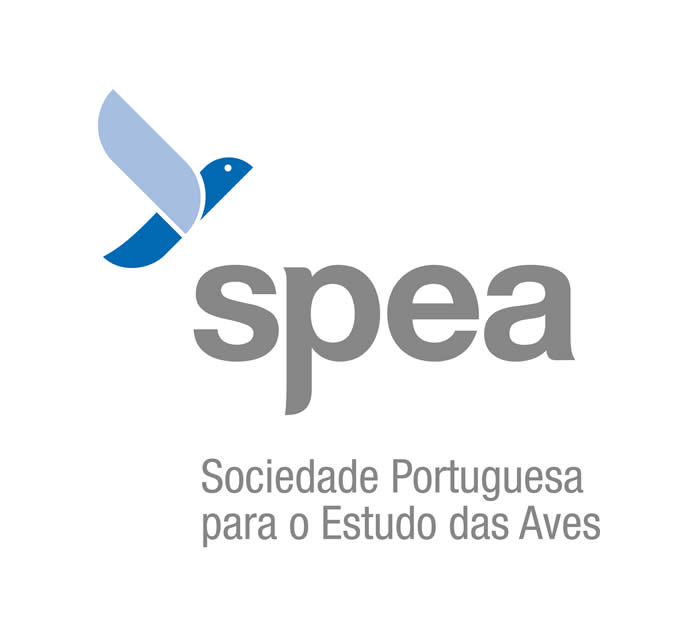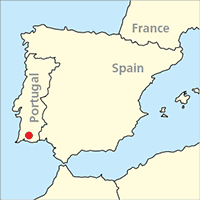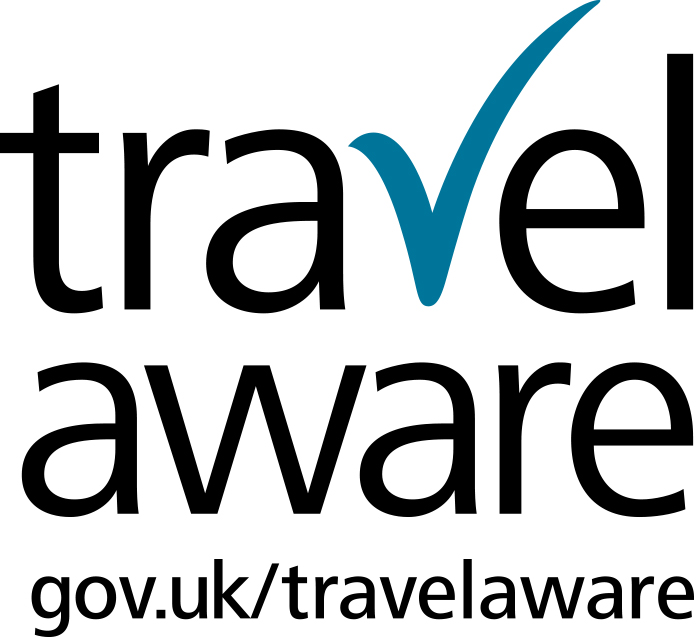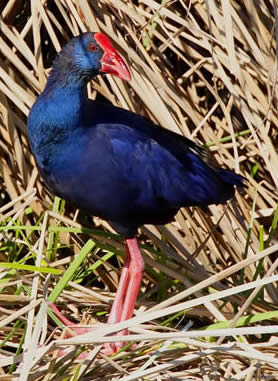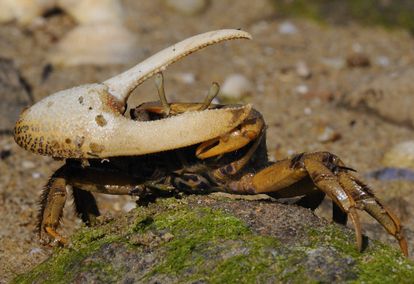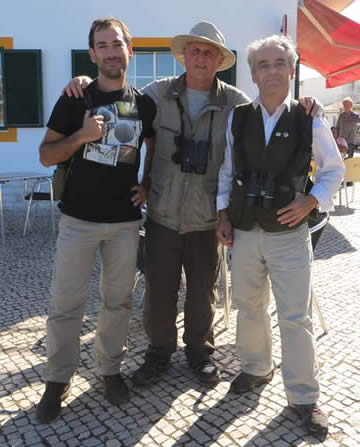Algarve & Alentejo 31 October — 7 November 2025
Autumn wildlife in south Portugal
Superb coastal wetlands, craggy cliffs and extensive plains: the south of Portugal offers first-class birdwatching in a comfortable climate.
Autumn sees an appealing mix of residents, winter visitors and migrant birds, some moving along the coast or towards their winter quarters in Africa.
This holiday, in Algarve and Alentejo, incorporates a mixture of wetlands, coastal cliffs, oak forest, dry grassland and hilly areas. Highlights could include Iberian specialities, like black-shouldered kite, great and little bustards, black-bellied sandgrouse and azure-winged (Iberian) magpie, plus plenty of other wildlife and beautiful landscapes.
By staying inland we can enjoy the undeveloped Algarve, move past the better known beaches and golf courses, and we are well-placed for the extensive grasslands of the remote Alentejo.

Azure-winged magpie (Steve Fletcher)
Barrocal, coast and Alentejo
At Alte, birdwatching in the traditional farmland areas of the limestone Barrocal may yield short-toed and Bonelli’s eagle, little owl, hoopoe and woodlark. The classified site of Rocha da Pena is a magnificent natural monument of great beauty. Scrub here may hold southern European birds such as southern grey shrikes, Dartford and Sardinian warblers, cirl and rock buntings, and blue rock thrush on the cliffs.
Migratory or late summer butterflies, like small copper, long-tailed and Lang’s short-tailed blues and painted lady could still be on the wing. At nearby Benémola spring, one of the few permanent streams in the Algarve, we can look for seasonal dragonflies, like western willow spreadwing, epaulet skimmer and red-veined darter.
Castro Marim Nature Reserve, in the Guadiana estuary near the border with Spain, has extensive marshes and salinas. Waders should include black-winged stilt, avocet and Kentish plovers, plus many migrants from the Arctic. Other waterbirds likely are good numbers of greater flamingos, spoonbill and egrets, and late terns could include Caspian.
At Ria Formosa Nature Park, at Quinta do Lago, the mudflats and lagoons of the area have a variety of waterbirds including specialities like purple gallinule, little bittern and red-crested pochard. Other unusual wildlife, like fiddler crabs and European chameleon, can be seen.
Lagoon at Ria Formosa; chameleon at Quinta do Lago.
Another excellent coastal site is Salgados lagoon near Pêra. This small coastal lagoon can be crowded with migratory waterbirds.
Castro Verde Special Protection Area, in Alentejo, is the most important dry-grassland area in Portugal. During the day we explore the dry grasslands, which support more than 1,000 great bustards. Birds of prey can be outstanding here, including griffon and black vultures, golden and Spanish imperial eagles. Other grassland birds include little bustard, black-bellied sandgrouse and stone-curlew. Larks include calandra and Thekla, and Spanish sparrows occur in flocks.
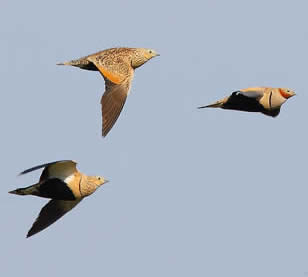
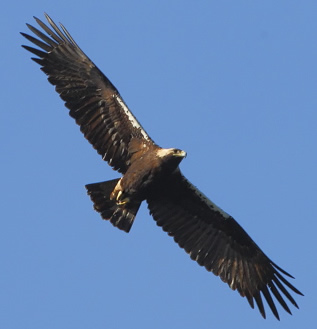

Black-bellied sandgrouse, Spanish imperial eagle, calandra lark (all by Steve Fletcher)
There are also sites of natural history interest in western Algarve. One of these is Monchique, the highest mountain in Algarve, where there's a chance of Dartford warbler, stonechats and blue rock thrush. The peninsula of Sagres includes Cape São Vicente, the extreme south-western point of continental Europe, from which seabird passage could include shearwaters, gannets, skuas and terns. The scrub and grassland above the impressive sea cliffs hold passerines and counts show a concentration of migrant raptors, though you have to be lucky, in the right place at the right time, to see them.

Cape St Vincent
Autumn flowers can include autumn crocus (Crocus serotinus), autumn and sea squills, autumn snowflake and Narcissus serotinus.
Autumn squill; Crocus serotinus; Narcissus serotinus.
Holiday details
Our base is are the three-star Alte Hotel (7 nights), located outside the village of Alte, surrounded by small fields and Mediterranean scrub. [Previous trips have had a second base, Hotel Mira Sagres in the small town of Vila do Bispo, but this year we have opted to have just the one hotel.]
Price: £1,700 per person in twin room for a week (Friday to Friday)
Single room supplement: £180
En suite facilities.
Flights: Jet2 flights, London Stansted to Faro (outbound flights are about an hour earlier than the original times).
Friday 31 October : flight LS1439 depart London Stansted 07:20 arrive Faro 10:15 (Flight duration 2 hrs 50 mins direct)
Friday 7 November: flight LS1440 depart Faro 11:05 arrive Stansted 14:00 (Flight duration 2 hrs 50 mins direct)
There may be other flights possible from elsewhere in the UK, so long as they tie in with the rest of the group.
Two Honeyguiders will be flying from London Gatwick (North Terminal) on these flights (these are also changed from the original times):
Friday 31 October: flight EZY8529 depart London Gatwick 06:05 arrive Faro 09:00
Friday 7 November: flight EZY8530 depart Faro 09:35 arrive Gatwick 12:20
Two Honeyguiders will be flying from Leeds/Bradford on these Jet2 flights:
Friday 31 October: flight LS251 depart Leeds/Bradford 07:45 arrive Faro 10:40 (Flight duration 2 hrs 55 mins direct)
Friday 7 November: flight LS252 depart Faro 11:45 arrive Leeds/Bradford 14:55 (Flight duration 3 hrs 10 mins direct)
Plus one from Bristol (flight numbers and times also changed since first noted here):
Friday 31 October: flight EJU7508 depart Bristol 09:15 arrive Faro 11:55
Friday 7 November: flight EZY2872 depart Faro 11:05 arrive Bristol 13:50
Deposit: £400
Maximum numbers: (two leaders): 14
Leaders
Chris Durdin (more about Chris on our Crete page).
The holiday is run in partnership with SPEA, the Portuguese BirdLife partner. The SPEA leader this year will be Hugo Sampaio, who is a SPEA Conservation Officer. Our local guide varies between Hugo or Lara Broom, SPEA's Membership Relations and Events Officer, who have both been our guide on previous holidays, or Domingos Leitão, SPEA's former Executive Director, now working elsewhere - they are all very good and speak excellent English.
Cork oak woodland, Monchique.
Conservation project
Sociedade Portuguesa para o Estudo das Aves (SPEA, BirdLife in Portugal) will receive our donation, and SPEA advises on a current priority project for funding. In 2025, we will support SPEA's current campaign to create a nationwide network of bird sanctuaries.
SPEA says: "In these sanctuaries, our experts will work with landowners to identify and implement measures that help birds and biodiversity, as by improving conditions for birds we will have positive impacts on the whole ecosystem."
In 2023 we were a sponsor of the 11th Congress of Ornithology of SPEA, 22-26 November, in Ponta Delgada University (Azores), a major science and conservation event run by SPEA. More on: https://spea.pt/congresso-de-ornitologia-2023/
2019: we supported the promotion of SPEA in the Algarve, namely funding a stand that, with the help of a local group of supporters, SPEA says will: "increase our street actions to promote and raise awareness about SPEA’s work in the Algarve. We need more members everywhere, but especially in the Algarve, where there are still lots of damaging developments to fight against."
| 2017: our support was was directed to SPEA's Marine Conservation Department, to a campaign against oil drilling off-shore by the Algarve coast. New release and news coverage here. 2015:we supported campaigning against the illegal capture and sale of wild birds - more about that in our news release here. More on previous projects and Honeyguide's links with SPEA) here. |
SUPPORTING |


